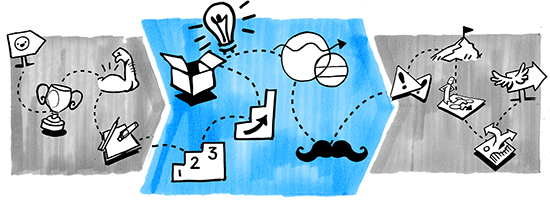Chapter 7. Harnessing Visual Metaphor

IN OUR METAPHORICAL WORLD of sketching, we’ve just explored the Timberland of Technique, and we’re in a good place to rest up a bit, rehydrate, and gaze up the Mountains of Metaphor that we’re about to tackle. It’s time to elevate how you think about your sketching—and what you want others to think about when they look at your sketches. It’s time to harness the power of what your sketches mean, not just what they look like, to help you explore and explain problems, and to explain your ideas and plans to others. Together, we’ll look at how to do the following:
Illustrate concepts using visual metaphor.
Solve problems using visual metaphor.
Mix metaphors in new and interesting ways, for greater meaning.
There’s also a library of 101 visual metaphors for you to use. Ready? Let’s go.
Enter the Metaphor
A metaphor is a comparison between two normally unrelated things to convey a concept, based on the meanings of those two unrelated things. Metaphors help us to make sense of our world and are a powerful way of explaining and communicating because they help to convey ideas based on concepts we already know (and might hold very strongly). They tap into that bank of concepts we all have in our heads to accelerate comprehension and conviction.1
The easiest way to understand metaphors is to see some examples, so let’s look at a few from one of my favorite books ...
Get Presto Sketching now with the O’Reilly learning platform.
O’Reilly members experience books, live events, courses curated by job role, and more from O’Reilly and nearly 200 top publishers.

